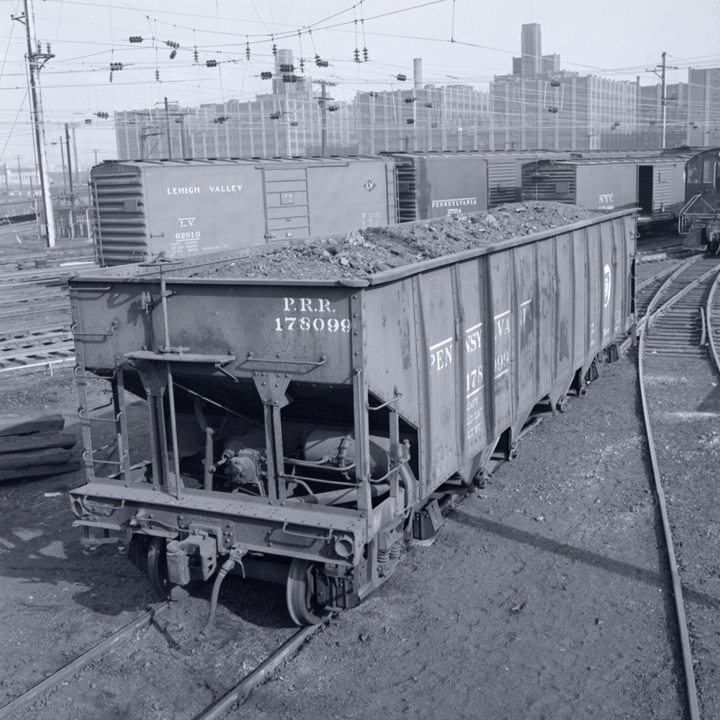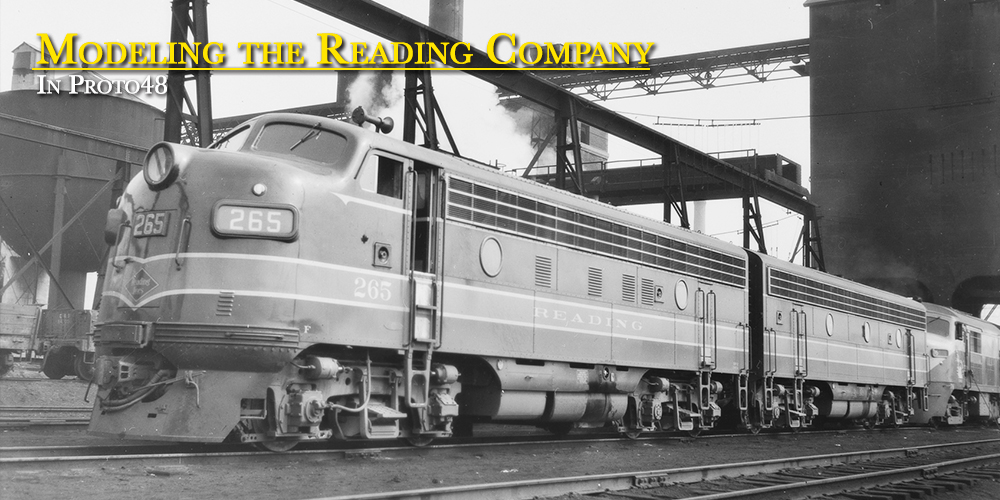
Prototype History
The H21 was originally designed as a 50 ton coke car. Construction of new H21 cars ran from 1909 through 1914. They were built by Altoona Car shops, Pressed Steel Car Co., Cambria Steel Co., American Car & Foundry, and Standard Steel Car Co.
A total of 21,738 car were built as the 50 ton H21 car class. It did not take long for the railroad to see that these cars had the capacity to hold 70 tons of coal. Lines West began converting the class into H21a’s in 1911. In 1912 the railroad began producing H22’s for coke service and converting the H21’s to handle coal. All H21’s would be converted to H21a by 1925. The conversion was basically placing 70 ton Crown trucks under the cars.
From 1915-1918 the railroad built an additional 14,270 H21a cars. The builders of the new cars were the same as for the H21’s with the addition of Ralston Steel Car Co. The railroad began to see that the frames were not able to hold up to the 70 ton coal loading. They began adding the reinforcement angle on the top sill from bolster to bolster starting in 1919. A corner to corner strengthened bulb angle would start appearing in the ’30’s but would not result in a class change. Nor would the conversion from original style “clamshell” hopper to “sawtooth” hoppers result in a class change.
The H21b class was created in 1930 when the railroad started a program to upgrade 100 cars with a 12 inch ARA center sill. This program was again done in 1943 to bring the total of H21b’s to 198. Externally there were no visible features to distingush the class besides the class stencil.
The H21d was a one-of-a-kind car conversition into a covered hopper car. While the H21d looks neat, I do not like to model one car classes. As I’ve pointed out before, most likely you would not have ever seen the car standing trackside in real life.
The class H21e first appeard in August of 1947 and reached a peak of 8,546 cars by January of 1953. The rebuild included adding a power hand brake and internal crossridge stakes. The power brakes had been applied to some H21a class cars without resulting in a class change. These H21a’s retained their internal cross ties at stakes 2, 4, 6, and 8. Some H21e car would have their side stakes welded on instead of the normal riveted side stakes.
In 1953 the PRR rostered 37173 class H21 hoppers. The OER did not fully split out the subclasses of “a”, “b” or “e.” Here are some fleet totals for the H21 class from 1952-1958 OER’s and the percentage that number represented to the total PRR open hopper fleet.
- 1952: 39702 cars 49.5% of the total PRR open hopper fleet
- 1953: 37173 cars 50.2% of the total PRR open hopper fleet
- 1956: 30737 cars 53.2% of the total PRR open hopper fleet
- 1958: 28020 cars 47.8% of the total PRR open hopper fleet
The PRR Steel Hopper book lists the following for class breakdowns for July of 1953: 35,256 total cars, 26576 H21a, 170 H21b, 1 H21d, 8509 h21e.
Cars of later subclasses are after my modeling time of 1952. I’ll let someone else talk about those classes.
References:
Keystone Article
PRR Steel Open Hopper Cars – John Teichmoeller
January 1952 Official Railway Equipment Register
September 1953 Official Railway Equipment Register
April 1956 Official Railway Equipment Register
Modeling the H21’s in Proto48
In O scale we have been blessed with nice brass examples of the H21’s over the years. Some are clearly better, more accurate, or have finer details than others. And they have different price tags to go with them. The manufacturers of these cars are Precision Scale, Pacific Limited, Yoder Models and Keystone Model Works.
In recent years we have been blessed with a plastic version from Atlas O. While not a a finely detailed as some of the better brass car the cost about one sixth of the newest brass cars.
I hope to have additional posts about my modeling of these hopper cars.
